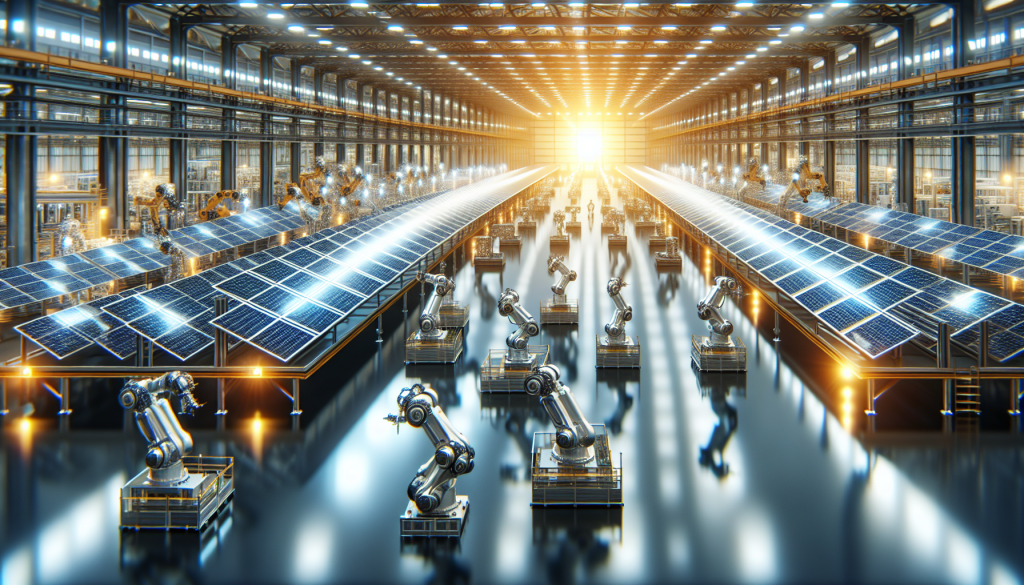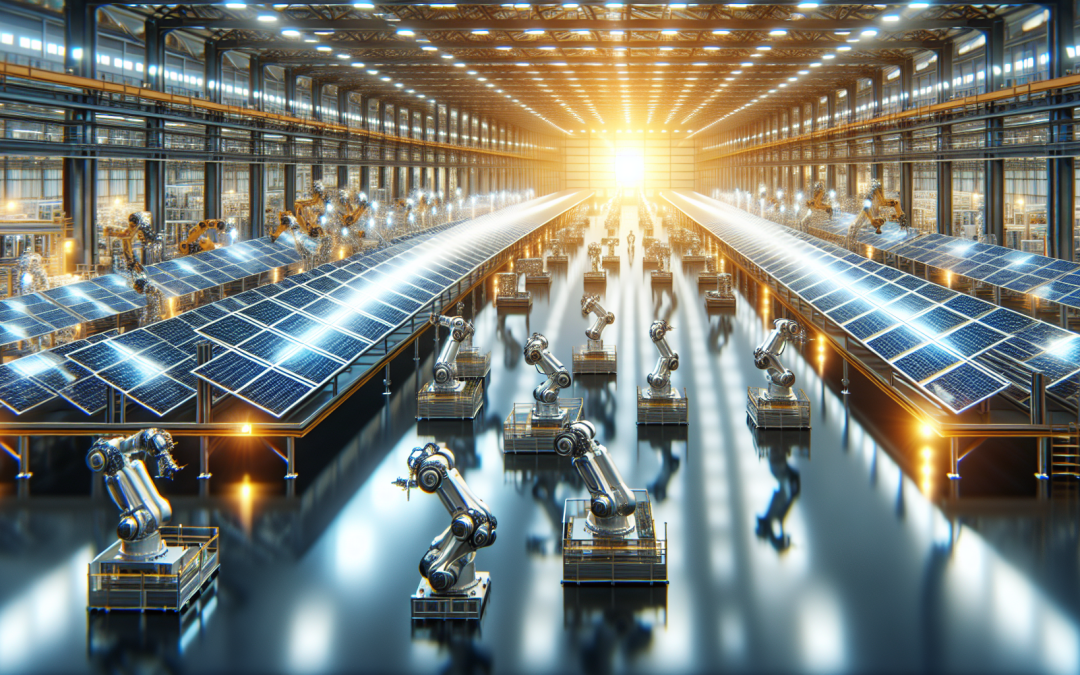Are you considering harnessing the power of the sun with solar panels? Look no further than Wild Sun Solar! With deep knowledge in solar panel production and installation opportunities, we have all the solutions you need to embrace renewable energy. With our friendly and personalized service, we treat you like family, guiding you every step of the way. So why wait? Call Wild Sun Solar today to start your journey towards sustainable and cost-effective energy solutions.
Solar Panel Production
Overview of Solar Panel Production
Solar panel production is the process of manufacturing solar panels, which are devices that convert sunlight into electricity. These panels are made up of various components, including silicon ingots, silicon wafers, solar cells, and protective materials. The production process involves several stages, from the initial production of silicon ingots to the final assembly of the solar panels. Quality control and efficiency testing are vital aspects of the production process to ensure the performance and durability of the panels.
Components of Solar Panels
Solar panels consist of several key components that work together to harness solar energy and convert it into usable electricity. One of the main components is the silicon ingot, which is a large block of pure silicon. These ingots are typically cylindrical in shape and are produced through a high-temperature process called the Czochralski method.
The silicon ingots are then sliced into thin wafers, which serve as the second component of solar panels. These silicon wafers undergo additional processing to improve their electrical properties and reduce the loss of solar energy during conversion. The wafers are then treated with anti-reflective coatings to enhance their light absorption capabilities.
The third component of solar panels is the solar cells. These cells are responsible for converting sunlight into electricity through the photovoltaic effect. Solar cells are typically made of layers of different materials, including silicon, which is the main semiconductor material used. Each solar panel contains multiple interconnected solar cells, which generate direct current (DC) electricity when exposed to sunlight.
Silicon Ingot Production
The production of silicon ingots is a crucial step in solar panel manufacturing. It begins with the extraction of raw silicon, which is obtained from silica – a compound found in sand. The silicon is then purified through various refining processes to remove impurities, resulting in high-purity silicon for ingot production.
The purified silicon is melted and placed in a specialized crucible, where it solidifies to form a cylindrical ingot. The Czochralski method is commonly used in this process, where a seed crystal is dipped into the molten silicon and slowly withdrawn to create a single crystalline structure. As the silicon solidifies, the ingot is pulled upward, forming a uniform cylindrical shape.

Silicon Wafer Production
Once the silicon ingots are produced, they are sliced into thin wafers through a process called wafering. This involves cutting the ingot into small discs using diamond wire saws or other cutting techniques. The wafers are then polished to remove any imperfections and ensure a smooth surface for optimal performance.
After polishing, the wafers undergo further treatment to improve their electrical properties. This includes applying dopants to create a p-n junction, which is essential for the functioning of solar cells. Anti-reflective coatings are also added to enhance the wafers’ ability to absorb sunlight effectively.
Solar Cell Production
Solar cells are the heart of solar panels, responsible for converting sunlight into electricity. The production of solar cells involves several steps, including the deposition of different layers of materials onto the silicon wafer. These layers create the necessary electric field and facilitate the movement of electrons within the cell.
The first step in solar cell production is the deposition of a front electrode layer, typically made of a transparent conductive oxide material like indium tin oxide (ITO). This layer allows sunlight to pass through and provides a conductive path for the generated electricity.
Next, a passivation layer is applied to the front side of the wafer. This layer helps reduce surface recombination, improving the cell’s efficiency by minimizing electron loss. Following that, an anti-reflective coating is added to enhance light absorption.
The last step is the deposition of the back electrode layer. This layer typically consists of a metal grid, such as silver or aluminum, which collects the generated electrons and conducts them out of the solar cell.
Solar Panel Assembly
After the solar cells are produced, they are interconnected and assembled into solar panels. The solar cells are soldered together using conductive adhesive or soldering techniques, creating a series of interconnected strings. These strings are then connected in parallel to increase the overall current output of the panel.
Once the solar cells are connected, they are encapsulated within a protective material, such as ethylene-vinyl acetate (EVA) or tempered glass. This encapsulation process protects the solar cells from external elements, such as moisture, dust, and impact. Frames are often added to provide structural support and facilitate the installation of the solar panels.
Quality Control in Solar Panel Production
Ensuring the quality and reliability of solar panels is paramount in the production process. Quality control measures are implemented at various stages to identify and address any issues that could affect the performance and longevity of the panels.
Visual inspection is conducted to check for any defects or irregularities in the silicon wafers, solar cells, and assembled panels. Electrical testing is also performed to verify the electrical characteristics of the solar cells, such as current-voltage (IV) curves and power output. These tests help identify any faulty or underperforming components.
Furthermore, durability testing is carried out to evaluate the resilience of the solar panels against environmental factors, such as temperature variations, humidity, and mechanical stress. Environmental chambers and stress testing equipment are used to simulate real-world conditions and ensure the panels can withstand these challenges.
Efficiency and Performance Testing
Measuring the efficiency and performance of solar panels is crucial in determining their energy generation capabilities. Various tests and measurements are conducted to assess the panels’ electrical output and overall efficiency.
One of the primary tests is the measurement of the panels’ power output under standard test conditions (STC). This test determines the maximum power the panels can generate when exposed to standardized levels of sunlight and temperature.
Other important metrics include the panels’ conversion efficiency, which indicates how effectively they convert sunlight into electricity, and the fill factor, which represents their ability to utilize the available solar energy. These measurements help evaluate the quality and performance of the panels and guide further improvements in design and manufacturing processes.
Environmental Considerations in Solar Panel Production
Solar panel production aims to harness renewable solar energy while minimizing its environmental impact. Several environmentally friendly practices and considerations are employed throughout the manufacturing process.
Efforts are made to reduce energy consumption during production by optimizing manufacturing techniques and utilizing renewable energy sources for powering the facilities. Additionally, recycling programs are implemented to recover and reuse materials, such as silicon scraps and glass, reducing waste and minimizing the need for raw material extraction.
Moreover, the use of eco-friendly materials and coatings, like low-toxicity encapsulants and lead-free solder, helps mitigate potential environmental hazards. Life cycle assessments are also conducted to evaluate the overall environmental impact of solar panels throughout their lifespan, from material extraction to disposal.
The Future of Solar Panel Production
As solar panel technology continues to advance, the future of solar panel production looks promising. Researchers and manufacturers are constantly exploring innovative materials and manufacturing techniques to improve the efficiency, durability, and affordability of solar panels.
Emerging technologies, such as perovskite-based solar cells and thin-film solar panels, show great potential for increased efficiency and reduced manufacturing costs. Furthermore, advancements in automation and robotics are streamlining the production process, enhancing productivity, and reducing human error.
Additionally, efforts are being made to make solar panel production more sustainable and eco-friendly. This includes reducing the use of rare or toxic materials, implementing closed-loop recycling systems, and optimizing energy consumption in manufacturing plants.
In conclusion, solar panel production entails a multi-step process involving the production of silicon ingots, silicon wafering, solar cell manufacturing, and panel assembly. Quality control and efficiency testing play a crucial role in ensuring the performance and durability of solar panels. Environmental considerations and the pursuit of sustainable practices are essential in minimizing the impact of production on the environment. With continuous advancements and research, the future of solar panel production holds tremendous potential for more efficient, affordable, and environmentally friendly solar solutions.




